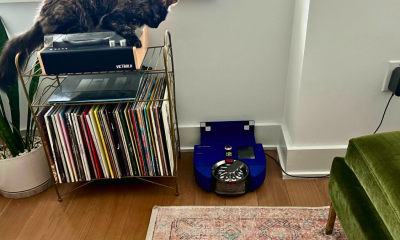Technology
Google Pixel 4 uses radar for face unlock and hand gesture detection

Google’s fighting back against leakers. Instead of letting leakers reveal new features for its upcoming Pixel 4, Google’s taking matters into its own hands and announcing them early.
In a blog post, Google revealed its next flagship Android smartphone will have a face unlock feature and a “Motion Sense” feature that uses radar to recognize hand gestures.
Though many phones have a face unlock feature — new iPhones use 3D-based Face ID and Android phones use their own 2D-based facial recognition — Google says it’ll work differently on the Pixel 4.
Both Pixel 4’s face unlock and Motion Sense features will make use of Google’s Soli motion-sensing radar technology.
Equipped with a mini version of Soli, Google says the Pixel 4 will be able detect when you’re nearby and recognize hand gestures. However, the downside to adding the Soli is that it also requires additional sensors such as a dot projector, IR cameras, and flood illuminator, which will live inside of the “forehead” bezel above the Pixel’s display.

The forehead bezel contains a ton of new sensors to enable face unlock and Motion Sense.
Apple includes many of these sensors inside of the iPhone’s notch, but it appears Google either couldn’t squeeze all the tech into a notch or wants to put the Pixel 3 XL’s widely disliked “bathtub”-shaped cutout behind it. Also note: there’s only one front-facing camera, so don’t count on the Pixel 4 having the Pixel 3’s secondary ultra-wide selfie shooter.
Back to the new Pixel 4 features. So, face unlock. The Pixel 4’s got it, which also means it will very likely not have a fingerprint reader on the back or underneath the display.
But unlike the iPhone, which requires you to pick up the phone and then swipe up on the lock screen to open up the home screen, Google says the Pixel 4 uses Soli to turn on the face unlock sensors when it sees you’re near the phone and then “open as you pick it up, all in one motion”.
Moreover, Google says the Pixel 4’s face unlock “works in almost any orientation — even if you’re holding it upside down — and you can use it for secure payments and app authentication too.” That’s a clear dig at Face ID’s portrait-only unlock orientation.
As for the Motion Sense feature, Google shares a few ways waving your hand in front of the Pixel 4 might be useful: “to skip songs, snooze alarms, and silence phone calls.”
At launch, these Motion Sense features will only be available in “select Pixel countries.”
Closing out its Pixel 4 blog post, Google says all face images and Soli sensor data are securely stored on the phone’s Titan M security chip and processed on device (and never shared with Google services).
Google’s expected to announce the Pixel 4 in October. In addition to Soli, face unlock, and Motion Sense, the phone’s expected to have a new glass design and two rear cameras inside of a new square-shaped bump. It’ll also likely be the first phone to run Android Q.
Whether or not the Pixel 4 will improve Google’s position in the smartphone game is anyone’s guess. During its Q2 2019 earnings call, the company said its lower-priced Pixel 3a and 3a XL doubled Pixel sales, but stopped short on providing concrete unit sales.

-

 Business4 days ago
Business4 days agoAPI startup Noname Security nears $500M deal to sell itself to Akamai
-

 Entertainment4 days ago
Entertainment4 days agoHow to watch ‘Argylle’: When and where is it streaming?
-

 Business6 days ago
Business6 days agoYoshi Mobility has come a long way since gassing up cars on the side of the road
-

 Entertainment3 days ago
Entertainment3 days agoNASA discovered bacteria that wouldn’t die. Now it’s boosting sunscreen.
-

 Business4 days ago
Business4 days agoUS think tank Heritage Foundation hit by cyberattack
-

 Entertainment3 days ago
Entertainment3 days agoDyson 360 Vis Nav robot vacuum review: Dyson should just stick to upright vacuums
-

 Business3 days ago
Business3 days agoTesla drops prices, Meta confirms Llama 3 release, and Apple allows emulators in the App Store
-

 Entertainment4 days ago
Entertainment4 days agoCrypto and taxes: Which forms you need to file



















